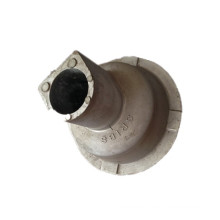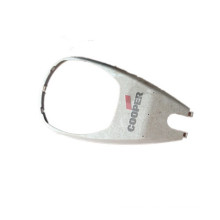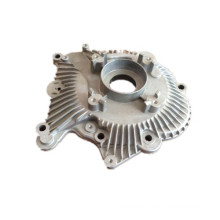Application of Industrial Robot in Light Alloy Gravity Casting Automation
2021-05-17
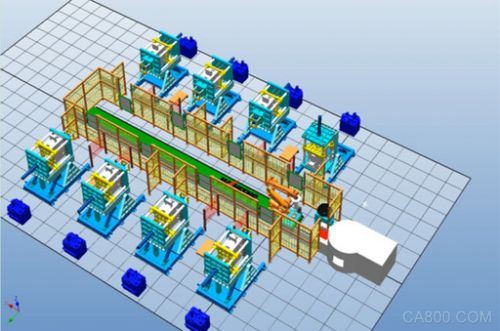
Fig. 1 Monorail robot casting automation line
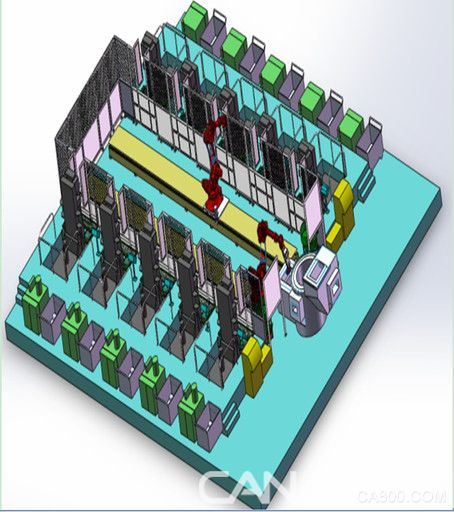
Figure 2 Two-track robot casting automation line
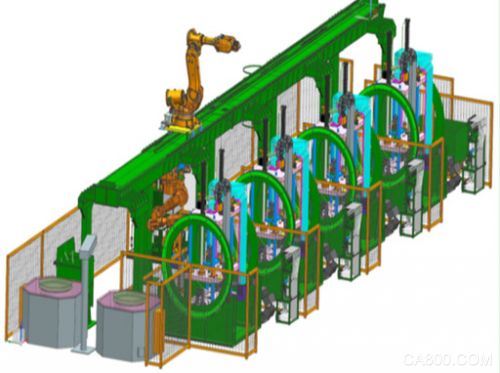
Fig. 3 Overhead skyrobot robot casting automation line
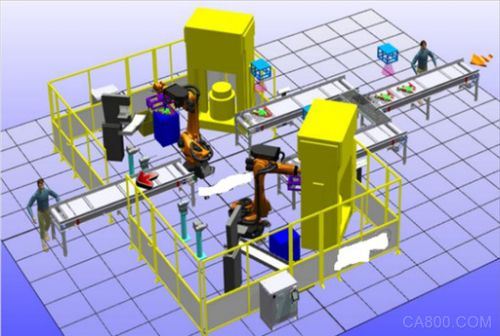
Figure 4 Post-Casting Process Automation Line
Casting is one of the main methods for obtaining mechanical product blanks and is a basic industry for equipment manufacturing. In recent years, with the development of the host industry in many areas, the quality requirements for castings have become higher and higher. Labor costs, safety and environmental pressures are also increasing. The foundry industry implements quality brands and innovative driving strategies to improve the quality and stability of castings. Sex is the inevitable requirement for product development. It is an inevitable trend for the development of casting development to promote the implementation of the "integration of the two industries" in the foundry industry to realize the intelligentization of key processes, the replacement of robots in key positions, and the intelligent optimization and control of casting production processes. The use of advanced and applicable casting technologies to improve the automation of casting equipment, especially the application of industrial robot automation technology, is a key measure for casting companies to implement sustainable development.
Development Status of Industrial Robots in Light Alloy Foundry Industry
The industrial robot is an important modern automated manufacturing equipment integrating mechanical, electronic, control, computer, sensors, artificial intelligence and other multi-scientific and advanced technologies. Since the United States developed the world’s first industrial robot in 1962, robotics technology and its products have developed rapidly. It has become an automated tool for flexible manufacturing systems, automated factories, and computer integrated manufacturing systems. Industrial robots have become more and more popular. The field has been applied. In the manufacturing industry, especially in the automotive industry, industrial robots have been widely used. For example, in the welding, surface spraying, loading and unloading, assembly and other operations, the robot has replaced the manual operation.
As we all know, reducing energy consumption, reducing environmental pollution, and saving the limited resources of the earth is a very important and urgent task facing people today. Under the general trend of lightening products such as automobiles and 3C, traditional steel materials have gradually been transformed into light alloy materials formed of aluminum alloys, magnesium alloys, or zinc alloys. Aluminum alloys, in particular, have low density but high strength. Close to or more than high-quality steel, good plasticity, can be processed into a variety of profiles, with excellent electrical conductivity, thermal conductivity and corrosion resistance and other characteristics, aluminum alloy can be used for heat treatment to obtain good mechanical properties, physical properties and corrosion resistance. However, the traditional aluminum alloy casting molding is also performed in a harsh environment, accompanied by environmental issues such as high temperature, dust, noise, and exhaust gas. Since the early 2000s, robots have been gradually applied in the aluminum alloy Die Casting field. Until now, they have developed into die-casting flexible processing units to realize the use of robots to achieve the entire process of painting, painting, and dispensing. The Die casting production efficiency is high, and the dimensional accuracy of the casting is particularly prominent.
However, with the requirements for the formation of new high-strength, high-toughness, ultra-thin-wall alloy materials, the disadvantages of parts produced by conventional die-casting that cannot be improved by heat treatment are also highlighted. Gravity casting of light alloys can realize various pouring methods according to the needs of product molding, and can strengthen the alloy material through heat treatment to improve product performance. It is one of the ways to promote light alloy material molding gradually. This type of equipment has a simple and flexible layout and relatively low investment. At present, most of the light alloy gravity casting enterprises in China are still in the stage of full manual operation, but some foreign companies have formed the use of industrial robots instead of artificial gravity casting process in the core, mold cleaning, pouring, taking pieces, grinding and other operations.
Application of Industrial Robot Integration Technology in Automatic Production of Light Alloy Gravity Casting
The traditional production mode of light alloy gravity casting is the manual lower core-casting mold clamping-handling aluminum liquid casting-casting machine overturning product solidification-hand-opening mold ejection-hand-pickup-hand coding-natural cooling-hand-cleaning - Transit detection. Basically, the entire process is based on manual operations, and the dependence on people is relatively high. Due to the frequent replacement of operating personnel and the limitation of the physical capacity of operators, the stability of the pouring process is poor, and the quality of the foundry product fluctuates.
As a subsidiary of China Aviation Industry Special Aviation, Hubei Aerospace Equipment Manufacturing Co., Ltd. is a high-tech enterprise specializing in aluminum alloy gravity tilt casting. With its rich experience in casting and leading technologies in domestic foundry equipment, it started in 2014. In-depth development of robotic gravity casting automated production lines, has now developed a single-track robot, two-track robot gravity casting automated production line, overhead skyroof robot casting automated production line. Among them, the single-track robot and double-track robot gravity casting automated production line is mainly aimed at products of different types and beat requirements, and can be flexible in the layout and adjustment of the production line. The elevated sky rail robot casting production line is based on the entire casting process to carry out assembly line automation production and is suitable for high-volume products.
1. Monorail robot casting automation production line
It is composed of a pouring robot and a track system. The casting machine is distributed on both sides of the track. When the pouring robot receives the casting signal of the casting machine, the pouring robot takes a certain amount of molten aluminum from the melting spoon and then moves to the casting machine through the orbit to realize the automatic pouring process (as shown in FIG. 1 ).
2. Dual Rail Robot Gravity Casting Automation Production Line
This production line is similar to layout 1, which consists of two casting robots and two rail systems. Casting machines are located on both sides of the track. A casting robot is responsible for one side of the casting machine. The pouring robot receives the pouring instructions from the casting machine, and the pouring robot takes a certain amount of molten aluminum from the melting spoon, then moves to the casting machine by orbital movement, and performs automatic pouring. Since the two robots share a single melting furnace, there is a signal integration between the two robots. (as shown in picture 2).
3, overhead skyroof robot gravity casting automated production line
The production mode is manual lower core-casting machine mold-robot picking aluminum liquid casting-casting machine overturning product solidification-automatic mold opening ejection-robot pickup-robot grasping workpiece coding-robot release conveyor belt cooling-robot grasping Take the workpiece cleaning - the robot grabs the workpiece and places the conveyor belt - the robot grabs the workpiece for X-ray inspection.
The production line includes a set of seven-axis casting robots, a set of seven-axis robots for picking up parts, a set of six-axis cleaning robots, a set of inspection robots, a set of gantry overhead rail systems, four large-rotation servo-motor gear transmission tilt casting machines, and a Cooling conveyor belt, a transfer conveyor belt, and a cleaning and flexible sanding table are composed of a pickup robot installed at the upper end of the gantry overhead frame and a pouring robot installed at the lower end of the gantry overhead frame to facilitate ground cleaning and space saving (as shown in Figs. 3 and 4). Follow several steps to automate the casting process:
a. When the operator manually completes the pneumatic cleaning of the mold and the lower core, press the “work” button on the panel of the casting electrical control cabinet. The pouring robot accurately extracts the corresponding aluminum water from the furnace according to the dose parameters set by the process and transports it. Finish the automatic pouring of the corresponding mold that signals. After the pouring is completed, the pouring robot issues a pouring success instruction to the cast casting machine, and returns to the ladle cleaning station for ladle cleaning, and then returns to the top of the furnace furnace for heat preservation and standby, ready for the next pouring operation, and the robot casting can be performed. The synchronous movement between the casting robot and the gravity tilt casting machine is achieved, and the robot guides the aluminum pouring ladle to perform the exact position where the pouring is performed.
b. After the casting machine has been given a successful pouring instruction, the aluminum water filling is automatically turned over 90 degrees within 2 seconds. After the casting has reached the cooling and solidification time, the casting machine rotates and sequentially opens the mold, and at the same time sends a pickup request to the pickup robot.
c. The picking robot removes the casting from the mold, transports it, and places the code on the cooling conveyor.
d. The picking robot places the castings on the conveyor belt. The castings are cooled by the conveyor belt. The robot picks up the end of the conveyor belt. The castings are placed in the vibrator, waiting for the sanding to finish, picking up the pieces, and placing them in a saw cutting machine In the middle, sawing and cleaning are completed.
e. The picking robot is placed in the conveyor belt, and the inspection robot detects the transmitted parts and performs X-ray inspection. The inspection robot removes and places the unqualified product in the defective area. Eligible products flowing from the conveyor belt are placed in the heat treatment zone by the pickup robot.
On the basis of first-class hardware and equipment integration, the production workshop also integrates an advanced manufacturing management system (MES), and through information technology such as the Internet of Things, the Internet, and industrial automation, it realizes all-round integration of people, machines, materials, and method rings in the workshop. Casting production of intelligent operations.
The development of industrial robot integrated system technology can reduce investment and operating costs for light alloy gravity casting, improve product quality consistency, increase productivity, improve employee work quality, enhance manufacturing flexibility, reduce raw material waste, increase product yield, and satisfy safety Regulations to improve health and safety conditions and reduce staff turnover to ease recruitment pressures. While industrialization and informatization are developing, intelligent manufacturing is a high degree of integration of industrial technology and information technology. It fundamentally realizes the change of the enterprise's manufacturing model. Under the background of integration of industrialization and informationization, only the automation level of the foundry industry can be improved. Enhance the deep application of industrial robots in the foundry industry, accelerate the deep integration of information technology and the traditional foundry industry in order to enhance the competitiveness of foundry companies.
we have belt conveyors consist of standard parts, which are advanced and simple in structure, easy to maintain. Our belt conveyor equipment is is widely used in different industry to transfer sandy or lump materials, or packaged materials. According to different transferring equipment, the transfer system can be one alone or multi-conveyors or combined with other transfer equipment or packing machine, printing and coding machine. The belt conveyor can be installed horizontally or to meet the needs of different transfer lines.
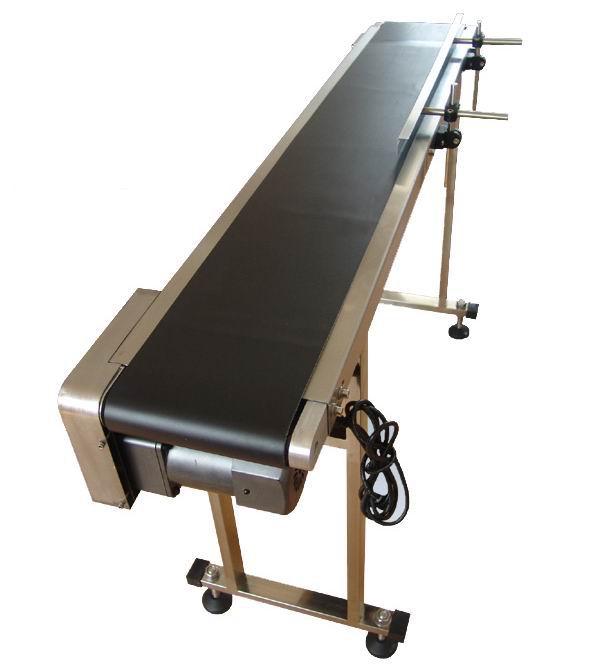
Conveyor Belt, Belt Conveyor, Chain Conveyor, Gravity Conveyor
Ningbo Beilun Tianzheng Machinery Manufacture Co., LTD http://www.whwallprinter.com

